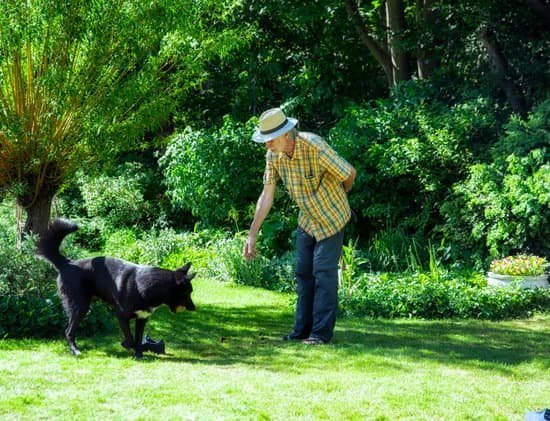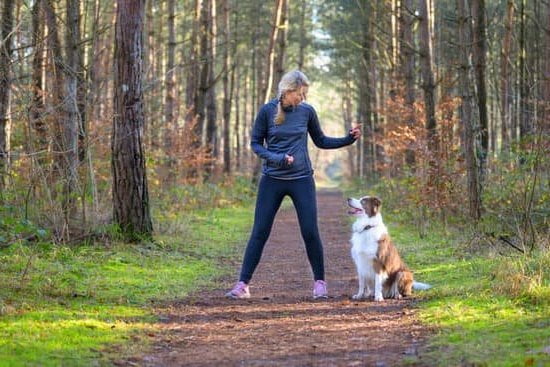Dogs pulling on leashes can be a frustrating and challenging issue for many dog owners. The constant tugging and straining can make walks unpleasant and even dangerous. In this article, we will explore the common problem of dogs pulling on leashes and provide effective solutions to help train your dog to walk politely by your side.
Understanding why dogs pull on leashes is the first step in addressing this issue. Dogs naturally have an instinct to explore their surroundings, and pulling on the leash allows them to do so. Additionally, some dogs may pull out of excitement or as a way to assert dominance.
Regardless of the reason, leash pulling can have negative effects not only on dog owners but also on their furry friends. It can lead to strained muscles, discomfort, and anxiety for both parties involved.
To prevent leash pulling, it is crucial to use proper equipment that provides you with control and helps redirect your dog’s focus. Choosing the right collar or harness for your dog can make a significant difference in their behavior during walks. A no-pull harness or head halter can be especially beneficial as they distribute pressure evenly across the body and discourage pulling.
In the next sections, we will dive deeper into step-by-step training techniques for teaching basic leash manners, positive reinforcement methods for leash walking, exercises to stop leash pulling, common challenges during leash training, and how adjusting your walking routine can help prevent pulling. By following these guidelines and staying consistent in your training efforts, you can enjoy stress-free walks with your well-behaved companion.
The Importance of Proper Equipment to Prevent Leash Pulling
Proper equipment is essential when it comes to preventing leash pulling in dogs. Choosing the right collar or harness for your dog can make a significant difference in their behavior during walks. In this section, we will discuss why selecting the appropriate equipment is crucial and explore two popular options: no-pull harnesses and head halters.
When selecting a collar or harness for your dog, it’s important to consider their individual needs and physical characteristics. Traditional flat collars may be suitable for some dogs, but they are not effective at preventing leash pulling for all breeds and sizes.
For dogs that tend to pull, a no-pull harness can be a game-changer. This type of harness works by redirecting the dog’s forward momentum when they pull, discouraging the behavior without causing any discomfort or harm.
Another option to consider is a head halter, such as a gentle leader or Halti. Head halters work similarly to horse halters, providing control over the dog’s head and muzzle. By controlling the dog’s head movements, head halters allow you to effectively guide your dog’s behavior during walks. It’s important to note that proper fitting and introduction are crucial with head halters to ensure your dog feels comfortable wearing them.
Both no-pull harnesses and head halters provide an alternative means of control that discourages leash pulling without causing pain or harm to the dog. However, it’s essential to choose the equipment that will work best for your specific dog. Consulting with a professional trainer or behaviorist can help you determine which option is most suitable for your furry friend.
Step-by-Step Guide
Establishing a Strong Foundation of Obedience Commands
Before embarking on leash training, it is crucial to ensure that your dog has a solid foundation of basic obedience commands. Commands such as “sit,” “stay,” and “come” play a vital role in teaching good leash manners. The ability to follow these commands will give you better control over your dog during walks.
Start by practicing these commands in a quiet and familiar environment, gradually increasing the level of distractions as your dog becomes more proficient. Use positive reinforcement techniques, such as treats and praise, to reward your dog for correctly following each command. Consistency is key during this phase, so make sure to use the same verbal cues and hand signals each time.
Once your dog reliably responds to these basic commands indoors, start incorporating them into short training sessions on leash. Begin in a quiet area with minimal distractions before gradually moving to more challenging environments. This will help your dog learn to focus on you and respond obediently even when other stimuli are present.
Teaching Your Dog to Focus on You During Walks
One common reason why dogs pull on leashes is because they are easily distracted by their surroundings. Teaching your furry friend to focus on you during walks can significantly reduce leash pulling behavior.
To teach focus, start by holding a treat close to your face and saying the command “watch me.” When your dog makes eye contact with you, give them the treat and praise them lavishly. Gradually increase the duration of eye contact before giving the reward.
Practice this exercise during short training sessions both indoors and outdoors. As your dog becomes more proficient at focusing on you, incorporate it into your regular walks. Whenever your dog gets distracted or starts pulling, use the “watch me” command to redirect their attention back to you. With consistent practice, your dog will learn that paying attention to you is rewarding, making them less likely to pull on the leash.
Using Distractions as Learning Opportunities
While it is important to minimize distractions during the early stages of leash training, gradually introducing controlled distractions can help your dog generalize their leash manners in various environments. Start by exposing your dog to mild distractions, such as people walking by or other dogs at a distance.
As you walk past these distractions, use positive reinforcement techniques to reward your dog for staying calm and focused on you. Treats and praise can be used to reinforce good behavior in the presence of distractions. Gradually increase the level of difficulty by getting closer to more challenging distractions as your dog becomes more comfortable.
Remember, consistency and patience are key when teaching basic leash manners. Every dog learns at their own pace, so be sure to tailor your training approach based on your dog’s individual needs. With time and dedication, you will see significant improvements in your dog’s leash-walking behavior.
Positive Reinforcement Training Techniques for Leash Walking
Positive reinforcement training techniques are highly effective when it comes to teaching your dog proper leash manners. This approach focuses on rewarding desired behaviors rather than punishing unwanted ones. By using positive reinforcement, you can encourage your dog to walk calmly on a leash without pulling.
One of the most powerful tools in positive reinforcement training is the use of rewards and treats. When your dog walks beside you without pulling, praise and reward them with treats, verbal praise, or petting.
These rewards should be given immediately after your dog demonstrates the desired behavior to reinforce the connection between their actions and the positive outcome. It is important to find what motivates your dog – whether it’s small food treats, a favorite toy, or verbal praise – and use those incentives consistently during training sessions.
Clicker training is another effective technique for preventing leash pulling. This method involves using a clicker – a small handheld device that makes a distinct sound – to mark the exact moment your dog performs the desired behavior.
For example, when your dog walks without pulling on the leash, you would click right at that moment and then follow up with a treat or reward. The clicker helps create a clear communication signal for your dog and reinforces their understanding of what you want from them.
It is important to remember that while positive reinforcement training techniques can be highly effective, consistency and patience are key. Leash walking skills may take time for your dog to fully grasp, especially if they have been accustomed to pulling in the past. Be consistent with your rewards and expectations so that your furry friend can learn proper leash manners over time. With practice and dedication, you will soon enjoy stress-free walks with your well-behaved dog.
Training Exercises to Stop Leash Pulling
One of the key steps in teaching your dog not to pull on the leash is to practice specific training exercises that reinforce proper leash walking behavior. These exercises help your dog learn to walk calmly by your side without constantly pulling or dragging you along. By consistently practicing these exercises, you can train your dog to become a well-behaved and enjoyable walking companion.
The first training exercise to stop leash pulling is teaching the “heel” command. Heel is a specific position where your dog walks right beside you with their shoulder aligned with your leg. To teach this command, start in a quiet and familiar area without distractions.
Hold treats in one hand and let your dog sniff them, then begin walking slowly while holding the treat hand right next to your leg. As soon as your dog reaches the correct position, reward them with praise and a treat. Repeat this exercise multiple times during each walk, gradually increasing duration and distance.
Another effective training exercise is practicing loose leash walking. This involves teaching your dog to walk with a loose leash instead of pulling tautly. Start by using treats or a toy as a lure to get your dog’s attention and reward them for staying close to you without pulling.
Initially, take short walks in low-distraction environments and gradually increase difficulty as your dog improves their skills. If they start pulling on the leash, stop walking immediately and wait for your dog to release tension before continuing.
| Training Exercise | Description |
|---|---|
| Heel Command | Teaching the proper position where the dog walks beside you with their shoulder aligned with your leg. |
| Loose Leash Walking | Teaching the dog to walk with a loose leash without pulling tautly. |
It’s important to gradually increase the difficulty of training exercises as your dog improves their leash manners. Start in controlled environments, such as in your backyard or a quiet park, before moving to more distracting areas. Keep training sessions short and positive, focusing on rewarding your dog for good behavior. Consistency and repetition are key to reinforce the desired behaviors and create long-term success in stopping leash pulling.
By incorporating these training exercises into your daily walks, you can effectively teach your dog not to pull on the leash and transform them into a well-behaved walking companion. Remember to always be patient and consistent with your training efforts, and celebrate each small progress your dog makes towards mastering proper leash manners.
Solving Common Challenges During Leash Training
Leash training a dog can sometimes present challenges, especially when dealing with stubborn or resistant dogs. However, with patience and persistence, these challenges can be overcome. In this section, we will explore some common challenges during leash training and provide strategies to solve them.
1. Dealing with stubborn dogs that resist leash training:
Some dogs may initially resist leash training due to fear, anxiety, or a strong desire to explore their surroundings. To work through this challenge, it is important to start slowly and gradually introduce the concept of walking on a leash. Begin by having your dog wear the collar or harness without attaching the leash.
Reward your dog for wearing the equipment and gradually introduce short walks in familiar and comfortable environments. Use positive reinforcement techniques such as treats and praise to encourage your dog’s cooperation and progress at their own pace.
2. Overcoming leash aggression and reactivity issues:
In some cases, dogs may display aggression or react anxiously towards other dogs or people while on a walk. This can make leash training challenging and potentially dangerous. To address this issue, it is crucial to seek professional help from a qualified dog trainer or behaviorist who specializes in aggression and reactivity issues.
They can assess the underlying causes of your dog’s behavior and develop a tailored training plan to address their specific needs. Implementing desensitization exercises, gradual exposure to triggers, and teaching alternative behaviors can help manage leash reactivity over time.
Remember, solving these common challenges requires consistent training, patience, and understanding of your dog’s individual needs. Adjusting your approach based on their progress will facilitate successful leash training that promotes positive behavior and a stronger bond between you and your furry friend.
Adjusting your Walking Routine to Prevent Leash Pulling
When it comes to leash training your dog, adjusting your walking routine is an essential step in preventing leash pulling. By making some simple changes to your routine, you can set both you and your furry friend up for success during walks.
Incorporating Mental and Physical Exercise Before Walks
Before embarking on a walk, it’s important to provide your dog with mental and physical exercise. A tired dog is more likely to be focused and calm during the walk, making it easier to prevent leash pulling. Engage in activities such as puzzle toys, obedience training sessions, or interactive playtime before heading out for a walk. This will help tire out your pup’s mind and give them an outlet for any excess energy they may have.
Choosing Appropriate Walking Routes and Avoiding Triggers
Another crucial aspect of adjusting your walking routine is selecting appropriate walking routes and avoiding triggers that may cause your dog to pull on the leash. Start by choosing quiet areas or less crowded paths where there are fewer distractions like other dogs or loud noises. Gradually increase the level of difficulty as your dog becomes more proficient at loose leash walking.
Additionally, pay attention to any triggers that may cause your dog’s pulling behavior, such as squirrels, bicycles, or specific smells. When you encounter these triggers during walks, try to redirect your dog’s attention back to you using positive reinforcement techniques or by asking them to perform obedience commands they have been trained on. By avoiding triggers or appropriately managing them during walks, you can minimize the chances of leash pulling.
Walking routines play a significant role in preventing leash pulling in dogs. By incorporating mental and physical exercise before walks and carefully selecting appropriate walking routes while avoiding triggers, you are setting yourself and your dog up for successful training sessions. Remember patience and consistency are key when adjusting your walking routine for long-term success in leash training.
Troubleshooting
If your dog continues to pull on the leash despite your best efforts, there are several steps you can take to troubleshoot and address the issue. It’s important to remember that every dog is different, and what works for one may not work for another. However, with patience and consistency, you can make progress in achieving a well-behaved walking companion.
The first step in troubleshooting leash pulling is to assess your own handling techniques. Dogs are highly attuned to their owner’s energy and body language. If you are tense or inconsistent in your cues, it can confuse your dog and contribute to pulling behavior. Practice staying calm and relaxed during walks, using consistent verbal cues and body language. Additionally, check that you’re not inadvertently reinforcing the pulling behavior by inadvertently rewarding it with attention or forward movement.
Another common reason for persistent leash pulling is a lack of exercise or mental stimulation. Dogs have a lot of energy, particularly if they are a high-energy breed or young.
Make sure your dog is getting enough exercise before walks so that they are more likely to be calm and focused during the walk. Engaging your dog’s mind through training sessions or puzzle toys can also help tire them out mentally, reducing their desire to pull on the leash.
If you’ve addressed these factors and your dog is still pulling on the leash, seeking professional help may be beneficial. A professional dog trainer or behaviorist can provide personalized guidance based on your specific needs and challenges. They can assess the underlying reasons behind the pulling behavior and develop a customized training plan for you and your dog.
Remember that leash training takes time and consistent effort. It’s important not to get discouraged if progress is slow at times. With patience, positive reinforcement, proper equipment, and appropriate behavioral guidance when needed – both from yourself as an owner and from professionals – you can teach your dog how not to pull on the leash, leading to enjoyable walks for both of you.
Maintaining Leash Manners for Long-Term Success
After successfully training your dog to walk nicely on a leash, it is important to maintain their leash manners for long-term success. Consistency and reinforcement are key in solidifying the behavior and ensuring that your walks remain enjoyable and stress-free. Even after completing the initial leash training, it is crucial to continue practicing and reinforcing good leash manners with your furry friend.
Consistency is an essential aspect of maintaining leash manners. Dogs thrive on routine and repetition, so it is important to consistently reinforce the desired behavior during walks. This means using the same commands and cues that you used during training and rewarding your dog for following them. By staying consistent in your expectations, your dog will understand what is expected of them during walks and be more likely to exhibit good leash manners.
Reinforcement is another crucial element in maintaining leash manners. It is important to continue rewarding your dog for walking politely on a leash, even after the initial training period. Rewards can include treats, praise, or anything else that motivates your dog. By consistently rewarding good behavior, you are reinforcing the positive association between walking politely on a leash and receiving something they enjoy.
In addition to consistency and reinforcement, ongoing practice is also necessary for maintaining good leash manners. Keep incorporating regular walks into your daily routine to provide continued opportunities for reinforcement. Practice walking in various environments to expose your dog to different distractions and reinforce their ability to stay focused on you. Remember that dogs are constantly learning, so even if they have been trained well, continuing regular practice sessions will help maintain their skills over time.
By consistently using positive reinforcement techniques, staying consistent with commands and expectations, and practicing regularly, you can ensure long-term success in maintaining your dog’s leash manners. Enjoying stress-free walks with a well-behaved companion not only enhances the bond between you and your furry friend but also creates positive experiences that both of you can cherish. Happy walking.
| Benefit | Description |
|---|---|
| Consistency | Using the same commands and cues consistently to reinforce expectations. |
| Reinforcement | Rewarding good leash manners with treats, praise, or other motivating rewards. |
| Ongoing Practice | Incorporating regular walks and continuing to practice leash skills in various environments. |
Conclusion
In conclusion, by following the steps outlined in this guide, you can achieve the goal of enjoying stress-free walks with your well-behaved dog. It is important to celebrate your achievements in leash training, as it is no easy feat to teach a dog not to pull on the leash. Through consistent and patient training, you have built a strong foundation of obedience commands and taught your dog to focus on you during walks.
The bond and trust formed between you and your dog during this process should not be underestimated. By using positive reinforcement techniques and rewarding desired behavior, you have established a relationship based on mutual respect and understanding. Your dog has learned that walking calmly beside you brings rewards and reinforces their good behavior.
Remember that maintaining leash manners requires ongoing practice even after the initial training is complete. Consistency in reinforcing desired behavior will solidify their leash-walking skills for the long term. It is also important to be aware of potential triggers or distractions during walks and choose appropriate walking routes to prevent any setbacks.
As you continue your journey with your well-behaved dog, enjoy the stress-free walks knowing that all of your hard work has paid off. The time spent teaching them proper leash manners will benefit both you and your furry friend for years to come. So grab your leash, head out for a walk, and relish in the joy of having a dog that walks politely by your side.
Frequently Asked Questions
How do I train my dog not to pull on the leash?
Training a dog not to pull on the leash requires patience, consistency, and positive reinforcement. Start by using a properly fitting harness or training collar that doesn’t cause discomfort or pain to your dog. Begin walking with your dog on a loose leash, and whenever they start to pull ahead, stop walking and stand still until they relax the tension on the leash.
You can also change directions frequently during walks to keep your dog focused on you. Reward your dog with treats, praise, and affection whenever they walk beside you without pulling. Consistency is key; continue practicing these techniques during every walk and gradually increase the time between rewards as your dog becomes more well-behaved.
How long does it take to train a dog to not pull on leash?
The time it takes to train a dog to not pull on a leash can vary depending on several factors such as age, temperament, previous training experience, and consistency in training methods. In general, it is important to remember that patience is crucial throughout the training process.
Some dogs may start showing improvement within a few weeks of consistent training sessions while others may take several months to fully grasp loose leash walking. Each individual dog will progress at their own pace, so it’s vital not to rush the training process or become discouraged if it takes longer than expected.
How do I teach my dog to walk beside me and not pull?
Teaching your dog to walk beside you without pulling requires gradual training and positive reinforcement techniques. Start by ensuring that your dog has mastered basic obedience commands such as “sit” and “stay.” Once these are established, introduce loose leash walking in areas with minimal distractions before progressing to more distracting environments gradually. Encourage them to walk beside you by keeping treats or toys near your leg where you want them to be positioned when walking together.
Use verbal cues like “heel” or simple sounds like clicking with your mouth to reinforce the desired behavior of walking alongside without pulling. Reward your dog with treats and praise whenever they stay close without tugging at the leash but react calmly if they start pulling, stopping until they release tension and resuming the walk when they are calm. With consistent practice and positive reinforcement, your dog will eventually learn to walk beside you without pulling on the leash.

Welcome to the blog! I am a professional dog trainer and have been working with dogs for many years. In this blog, I will be discussing various topics related to dog training, including tips, tricks, and advice. I hope you find this information helpful and informative. Thanks for reading!





